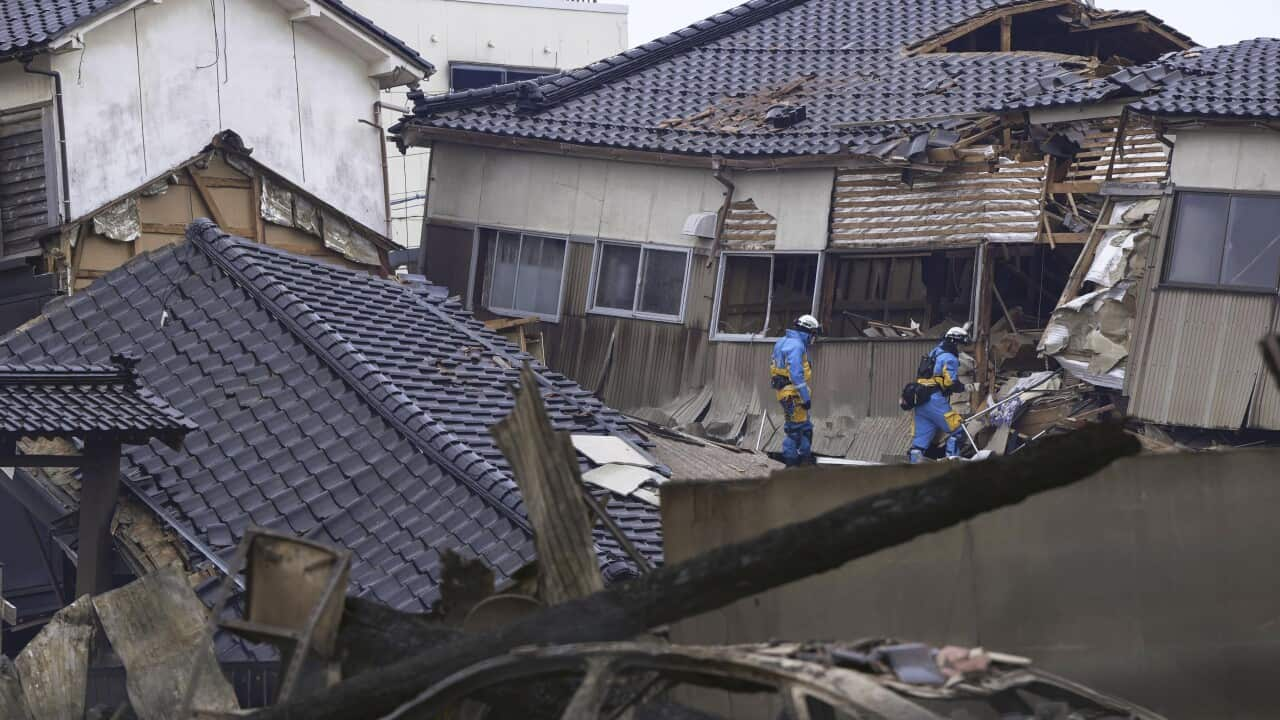Key Points
- A 7.6-magnitude earthquake struck Japan on 1 January, prompting tsunami warnings.
- Tsunamis are created by a sudden displacement of water, most commonly caused by underwater earthquakes.
- Japan is one of the most seismically active countries in the world.
A 7.6-magnitude earthquake struck central Japan on the first day of 2024, leading to tsunami warnings and news bulletins urging civilians in vulnerable zones to move to higher ground.
Along the coastline of the Sea of Japan, waves of around 1.2 metres were reported and more than 30,000 homes lost power following the quake.
At least 48 people have died and the search for survivors continues.
This marks the first time since the devastating earthquake of 2011 that Japan has had to issue a tsunami warning of this calibre, according to local reports.
How are tsunamis formed?
Tsunamis are created by a sudden displacement of water, such as underwater volcanoes or landslides, but the most common cause is underwater earthquakes, according to senior duty seismologist Hadi Ghasemi at Geoscience Australia.
"When the displacement in the water is generated by the earthquake, it travels outwards from the earthquake's source and forms the initial waves of the tsunami," Ghasemi told SBS News.
Those initial tsunami waves are characterised by their long wavelength and their ability to travel underwater across the ocean at speeds that can reach up to 800km/h.
The long wavelength means they lose very little energy.
These waves are "so persistent" that they can travel across the entire Pacific Ocean basin, according to Hrvoje Tkalčić, head of geophysics at the Australian National University and a professor at its Research School of Earth Sciences.
"Of course, the largest tsunamis are caused by [the] largest earthquakes, but it's not a simple function of the size of the earthquake, it's more of a particular configuration of rocks and faults," he told SBS News.
While in the deep, the waves are barely visible, but once they reach closer to the shore where the water becomes shallow, they slow down. This leads them to grow in height and energy.
Once they make landfall, the impact can be catastrophic.

Tsunami waves can travel underwater at speeds of up to 800km/h. Source: SBS News
What causes earthquakes?
Earthquakes, as a general rule, occur on fault lines which are weak zones in the earth's crust, Ghasemi explained.
As tectonic plates (the giant slabs of rock that make up the earth's crust) move, they sometimes become caught on one another and pressure begins to build.
"They [fault lines] basically accommodate the stress caused by [the] movement of tectonic plates," he said.
"The stress starts to accumulate, and eventually reaches a breaking point, where the rocks slip."

Japan has developed one of the world's most sophisticated tsunami warning systems to deal with the constant threat of earthquakes (file photo from 2011). Source: Getty / Jiji Press/AFP
Not every interaction between tectonic plates underwater results in a tsunami, according to Tkalčić.
"If the fault [line] is perpendicular to the surface of the earth, then the motion of the two rock units that slide past each other would be a hundred per cent lateral," he said.
"It would be horizontal, and there would be no displacement of the ocean water."
It's when slipping occurs between tectonic plates where one is forced above or below the other, displacing the water vertically, that a tsunami is formed.
Why is Japan so vulnerable to earthquakes and tsunamis?
Japan is one of the most seismically active countries in the world because it is in an "extremely complex tectonic setting", Tkalčić said.
Of the dozen or so larger tectonic plates that make up the surface of the earth, four of them meet in Japan.
The island nation also sits on the so-called 'Ring of Fire', a string of volcanoes and sites of seismic activity along the edges of the Pacific Ocean.
A vast majority of tsunamis occur in this region.
On 11 March 2011, northeastern Japan experienced a massive 9.0-magnitude earthquake, one of the strongest ever recorded.
The resulting tsunami produced waves reaching heights of 40m, devastating a 2,000km stretch of the coastline and reaching up to 5km inland.
More than 460,000 people were evacuated from their homes, with tens of thousands displaced in the ensuing years.
More than 120,000 buildings were destroyed, along with parts of the country's major infrastructure.
A 15m tsunami disabled the power supply and cooling at the Fukushima Daiichi nuclear reactors, causing the three nuclear cores to melt.
This resulted in the largest nuclear disaster since Chernobyl.
Initially, it was estimated both the earthquake and the tsunami killed nearly 20,000 people, but as of December 2020, Japan's National Police Agency attributed 15,899 deaths, 2,527 missing and presumed deaths, and 6,157 injuries to the event.










